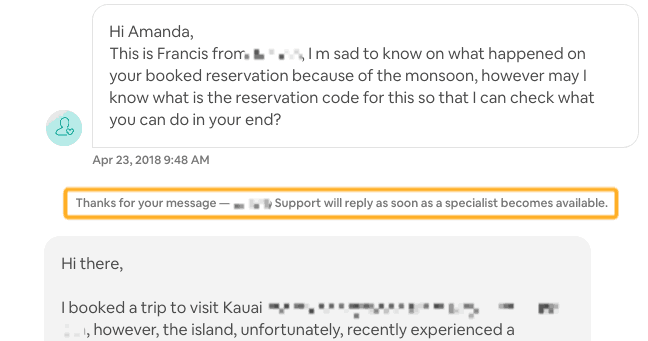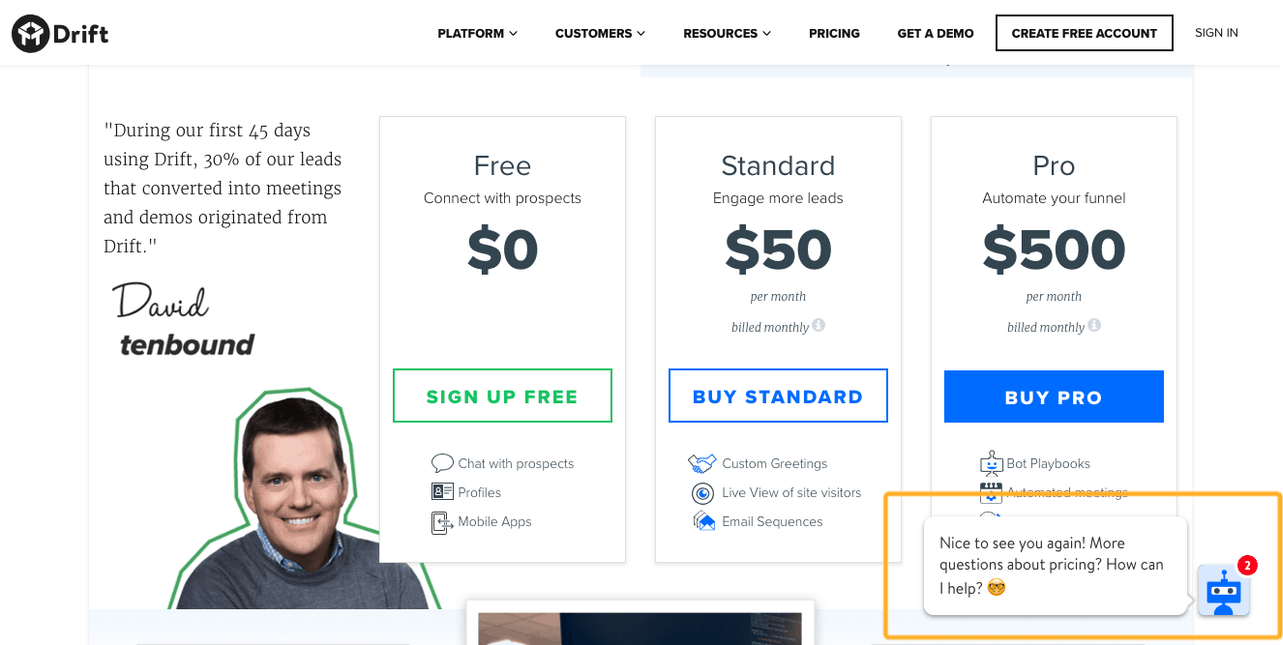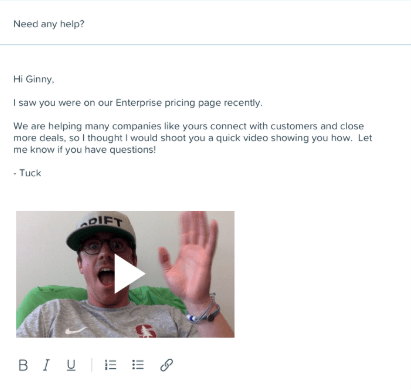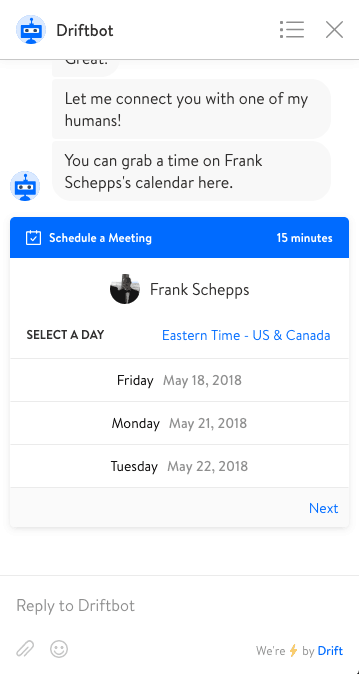
The other day, I was trying to change a hotel reservation over chat. I typed out my whole story, detailing the dates, reason for wanting to cancel, and even acknowledged their current policy and why I thought this was an extenuating circumstance. 150 words. Boom. I hit send.
And then I got this:
“Thanks for your message — support will reply as soon as a specialist becomes available.”

Wait, what? Not only was there no support rep available, but it took a full 24 hours for a real person to even get back to me.
How is that live chat? ?
Although situations like these are supremely frustrating, they’re not uncommon: A recent report showed that an overwhelming majority of consumers — 89% — want to be able to message businesses in real-time, but only 48% are equipped to do so. So instead of finding better solutions, we resort to tools that provide the kind of so-called live chat experience I had.
But in a world where the ideal chat response time is 10 seconds or less, unstaffed live chat software doesn’t make a lot of sense — who wants the impression of a person on the other side of a conversation, only to find out they’ve hit what’s essentially a form? That’s not a good experience.
The other problem? Live chat simply doesn’t scale. For example, a live chat that doesn’t respond in real-time can’t do things like answer customer or prospect questions, book meetings with sales reps, or route questions to the right department. In the situation I experienced, the live chat app made me wait 24 hours for a response from support asking me to call their toll-free number for immediate assistance.
So, why am I telling you about my woefully underwhelming experience using live chat to talk to a travel site?
Because, while live chat initially satisfied people’s need to talk to businesses online, conversational marketing is taking it a step further by giving them what they actually want: it’s allowing them to chat with real people, in real-time.
And that’s not something that can be ignored. As a millennial coming up in the space, I know that for most issues, I would prefer to talk to a company over chat rather than on the phone.
After all, it’s not only faster, it’s more convenient.
But millennials aren’t the only ones craving real-time conversation. According to a recent study, 90% of consumers want to use messaging to communicate with businesses.
What more, nearly 70% of people are sharing information with friends in messaging apps instead of on social media. As a result, the average amount of time that people spend in messaging apps per day has grown by 72% in just two years.
Put simply: the experience that we have when we chat with businesses needs to change. B2B chat experiences are being held to the same standards that people have when they message their friends on B2C apps.
But here’s the good news: conversational marketing isn’t only better for the customer, it’s better for businesses too.
Think back to the story about my chat experience with the travel site.
It put a burden on the company to respond immediately. It didn’t allow for much flexibility in the conversation — once I was in the chat, I couldn’t leave or it would drop. And how could anything this manual be scalable in an organization? The support rep had to manually work through my issue and then pass me off to the appropriate team.
Conversational marketing fixes all of these issues.
It allows for flexibility. Imagine a conversation that you might have with a friend on WhatsApp or Messenger.
You seamlessly transition between chatting in real time and periods where you don’t message each other back for hours or sometimes even days at a time. In short: it’s flexible.
Unlike live chat, conversational marketing allows for this. It allows you to easily move between the immediacy of a phone call and the permanence of an email, all in one conversation so that you can seamlessly pick up right where you left off. Every. Single. Time.
No more “dropped chats” and weird call back numbers.
It’s intelligent (and focuses on scale). Remember the story above where the support specialist had to give me the phone number of someone that I could contact in the cancellation department?
Conversational marketing alleviates this issue by using smart routing to auto-assign incoming chats to particular departments based on what people are asking. That way, sales reps never have to spend time dealing with support questions or other inquiries.
In other words, you’re not only creating a better customer experience, you’re scaling your sales funnel.
So, how do you make conversational marketing work for you? Here’s the five things you need to do:
✅ Put intelligent chatbots on high-intent pages. High-traffic, high-intent pages are meant for chat. These are often pages where your best prospects are hanging out. Think webinar registration pages, product pages, and pricing pages. Start more conversations by engaging these prospects using a greeting that is connected to the reason why the person might be on the page while being mindful of common questions.
Take our pricing page for example. Chances are if you’re on this page it’s because you’re highly interested and want more information. Our Driftbot knows that and immediately swoops into action, asking if you have any questions specifically in regards to pricing. Check it out?.

✅ Change your metric to conversations rather than conversions. B2B sales teams are often hyper-focused on the number of deals they’ve closed, not on their ability to successfully engage with and answer prospects questions. Shift your focus to measure your sales team’s conversations versus just conversions.
Start by optimizing the marketing channels that you’re already using.
Think about how many emails you receive every day that are sent from a “no reply” email address. It’s probably a ton, right? Now imagine if you wanted to respond to one of those emails and ask a question about the promo or product that was being advertised? You’d be out of luck since most replies to generic email address get stashed in a folder that marketers rarely look at — and that’s frustrating for both the buyer and the seller.
Instead, make it easy for customers to start a conversation with you by sending all of your emails from a real person and changing your metrics to look at conversations started rather than just bottom line revenue and conversions.
✅ Go real-time and be human. The tip I hear around the office the most? Show. Your. Face. Video immediately makes any conversation feel more personal and can give you insight into how a prospect may be feeling. Two ways to do this: encourage your sales team to turn on their cameras during sales calls and use create quick video demos to show, not tell, customers how to use your product.
Check out this email from Tuck, a member of our sales team.
Not only did he strike up a conversation with Ginny by asking if she had any questions about enterprise pricing. But he made his message feel more personal by including a quick intro video of himself.

✅ Use account-based targeting to start real-time conversations. Simply put, account-based targeting allows you to engage with targeted accounts in real time by letting you know when they’re on your website.
I recently overheard a story from one of our sales team members, Scott, who closed a deal while at home. Sitting on his couch. At 9pm. Um….what?!
By conducting a little research, he had found a target account, and emailed their SVP of Marketing, asking to connect. The SVP of Marketing then forwarded the email to another member of the team, John — the decision maker. When John came to site, Scott received a notification and the two immediately hopped on the phone.
Without the chatbot letting Scott know that John was onsite, Scott might’ve missed the opportunity to chat with John in real-time, and ultimately the sale.
✅ Let chatbots handle tedious tasks. People often think that chatbots will eventually replace human sales reps ?. But, here at Drift, we think about chatbots a little differently; they’re here to help us do our jobs better. They’re there to help us with the boring and mundane tasks that prevent us from doing the things that we’re good at, like helping customers through challenging and complex problems.
Take this for example. While Frank, a member of the Drift sales team, is busy on another sales call, the Driftbot can easily step into action and help a prospect put time on his calendar. No work needed from Frank. And no forms for the customer. It’s as easy as that.

Make the Shift to Conversational Marketing And Start Booking More Meetings
Using new technology, conversational marketing is tearing down the barriers that live chat previously constructed and is creating a more human chat experience for the customer. In other words, it’s giving people the flexibility to have conversations with businesses the same way that they would with friends on messaging apps. Top marketers realize this shift and are taking advantage of this new way of chat to humanize their brand and enhance the efficiency of their sales funnel.



